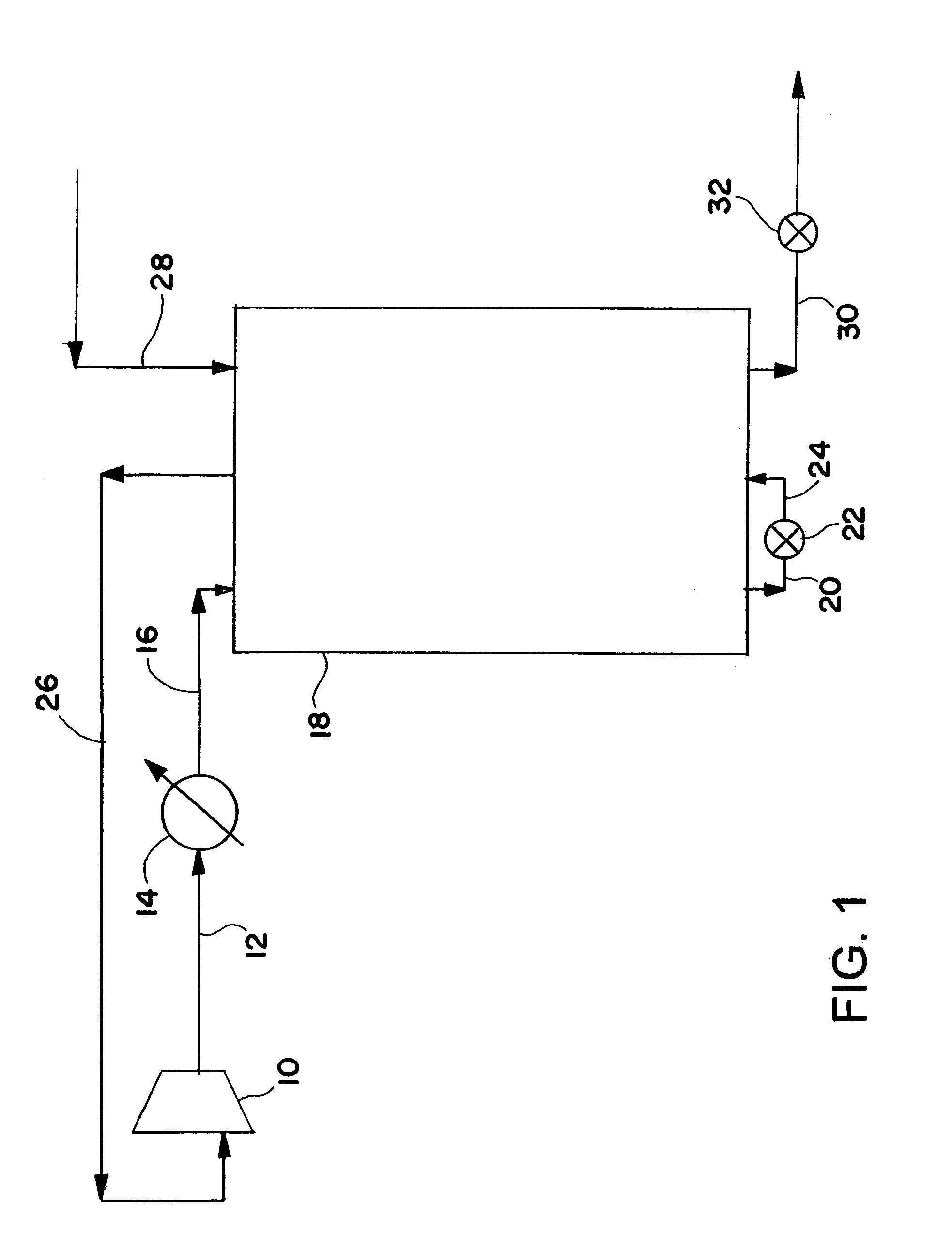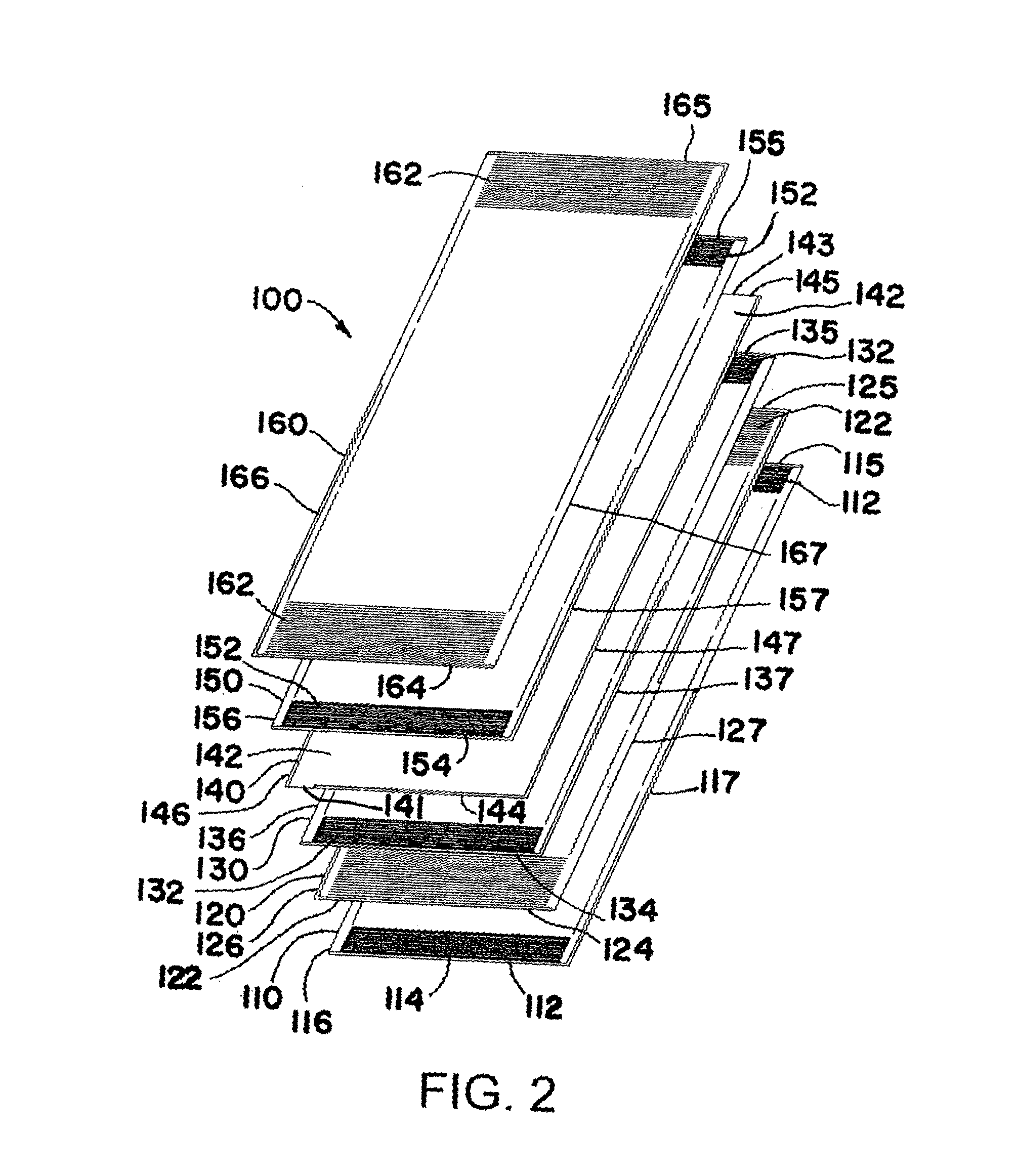Process for cooling a product in a heat exchanger employing microchannels
a technology of heat exchanger and product, which is applied in indirect heat exchangers, lighting and heating apparatuses, laminated elements, etc., can solve the problems of reducing the power requirements of compressors used, and achieve the effects of reducing thermal and mass diffusion distances, and reducing the power requirements of compressors
- Summary
- Abstract
- Description
- Claims
- Application Information
AI Technical Summary
Benefits of technology
Problems solved by technology
Method used
Image
Examples
example 1
[0097]Natural gas pressure is increased up to 2500 psig and the reduction in refrigerant flow rate (with same operating conditions) to achieve same the outlet temperature of natural gas is estimated. The natural gas pressures are 635, 1000, 1500, 2000, and 2500 psig. As the natural gas pressure is increased, the metal rib thickness between the channels needs to be increased. FIG. 22 shows the metal rib thickness that needs to be changed with natural gas pressure in a representative repeating unit of a heat exchanger. The repeating unit employed in FIG. 22 reads from left to right: natural gas (NG), low pressure refrigerant (LPR), high pressure refrigerant (HPR), LPR, HPR, LPR, NG. The table below gives the values of the metal thickness required at different natural gas pressures. The metal is stainless steel 304.
[0098]
TABLE 1Metal rib thickness at different natural gas pressuresNatural Gaspressure (psig)t1 (in)t2 (in)t3 (in)635.050.073.0101000.064.094.0171500.078.117.0252000.091.138...
example 2
[0104]A three stream heat exchanger is provided for the purpose of liquefying natural gas. Two of the streams involve the flow of a refrigerant through the heat exchanger, and the third stream involves the flow of the natural gas. One of the refrigerant streams is a high pressure refrigerant stream which is operated at a pressure of 323.3–322.8 psig, and the other refrigerant stream is a low pressure refrigerant stream which is operated at a pressure of 29.95–27.75 psig. The high pressure and low pressure refrigerant streams flow counter current to each other as illustrated in FIG. 3 The natural gas stream flows cross current to the refrigerant streams as illustrated in FIG. 3.
[0105]The heat exchanger is constructed of stainless steel (SS 304). It has a length of 1.00 meter, a width of 1.70 meters, and a stacking height of 2.85 meters. The core volume for the heat exchanger is 4.85 cubic meters. Repeating units of microchannel layers corresponding to repeating unit 100 in FIG. 2 are...
PUM
 Login to View More
Login to View More Abstract
Description
Claims
Application Information
 Login to View More
Login to View More - R&D
- Intellectual Property
- Life Sciences
- Materials
- Tech Scout
- Unparalleled Data Quality
- Higher Quality Content
- 60% Fewer Hallucinations
Browse by: Latest US Patents, China's latest patents, Technical Efficacy Thesaurus, Application Domain, Technology Topic, Popular Technical Reports.
© 2025 PatSnap. All rights reserved.Legal|Privacy policy|Modern Slavery Act Transparency Statement|Sitemap|About US| Contact US: help@patsnap.com



